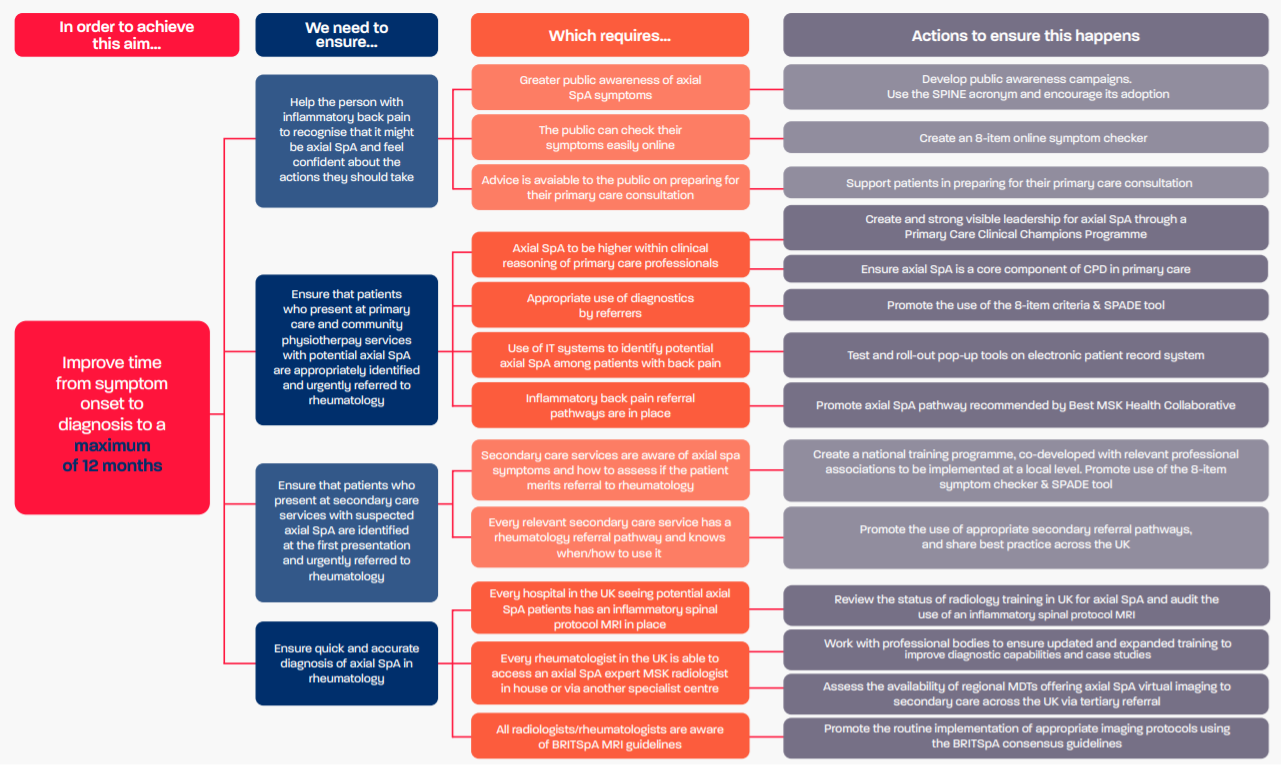For Healthcare Professionals – QI & research
For Healthcare Professionals – QI & research
Welcome to the act on axial SpA website - providing resources to reduce time to diagnosis in axial SpA. Explore our pages below, developed by healthcare professionals across various specialties. Think we are missing something relevant to your discipline? Please reach out to the Gold Standard team: goldstandard@nass.co.uk

This is the place to go to find out more about our Champions in Primary Care Programme.
We are creating a cadre of clinical champions in primary care and community services whose work ensures that axial spondyloarthritis (axial SpA) is higher within the clinical reasoning of primary care professionals, so that patients who present with suspected axial SpA are identified at the first presentation and urgently referred to rheumatology.

Here we are building resources to help HCPs in improving diagnostic delay.
We will utilise best practice examples from our Aspiring to Excellence sites to give you ideas and examples to improve care in your service.

Extra-articular manifestations (EAMs) are common, important features of axial spondyloarthritis (axial SpA) – the most prevalent being acute anterior uveitis (AAU), inflammatory bowel disease (IBD) and psoriasis.
We are creating tools to help clinicians who see those patients identify potential inflammatory back pain and axial SpA and know when to refer to rheumatology.

NASS Gold Standard Research
NASS Gold Standard Research
As part of our policy and campaigning work we have commissioned research to help build the burning platform and influencing policy makers and health care professionals as we target a social movement. A social movement which will ultimately catalyse driving down diagnostic delay.
ACT ON AXIAL SpA:
A Gold Standard time to diagnosis
The current time to diagnosis of axial SpA in the UK averages approximately 8.5 years from symptom onset. This delay is unacceptable and has serious consequences for the patient. Our act on axial SpA campaign sets out a roadmap for reducing the time from symptom onset to diagnosis to just one year.
